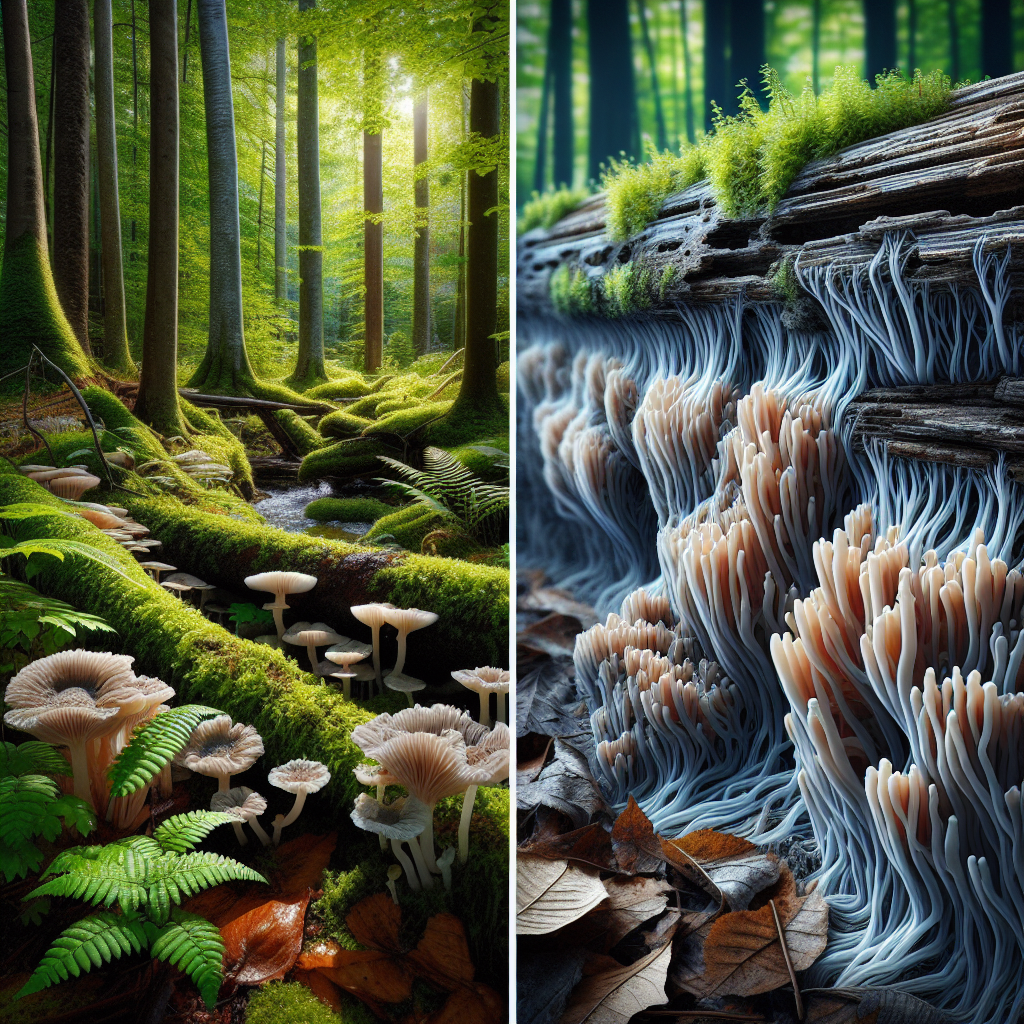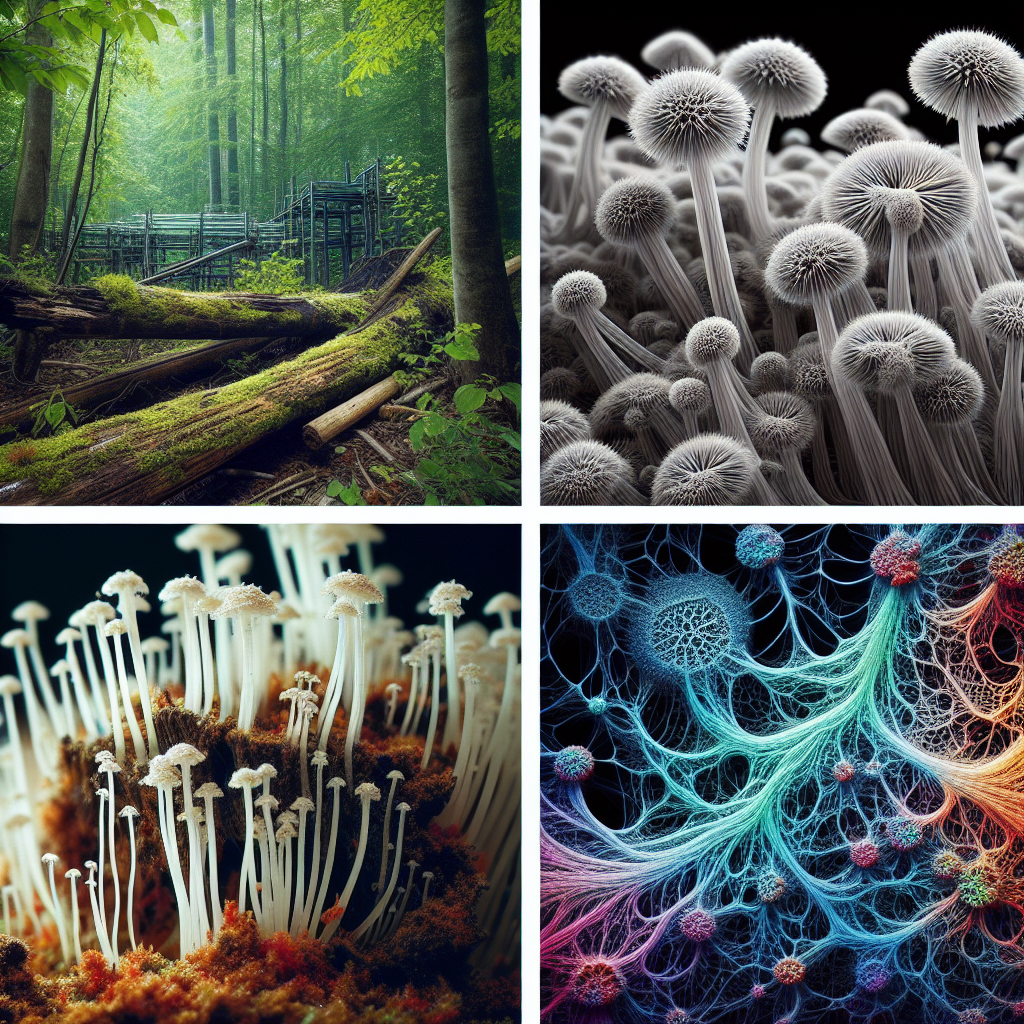Understanding the significance and location patterns of mycelium, the vegetative part of the fungi critical for decomposition and nutrient recycling in many ecosystems, is crucial for aspiring mycologists and nature enthusiasts alike. “Exploring the Places Where Mycelium is Found” provides an intriguing overview of the key habitats and conditions most conducive to mycelium growth. By the end of the article, you’ll have acquired a comprehensive understanding of the biogeography of this invaluable component of crucial fungi structures and an appreciation for its importance in sustaining ecological balance.

Understanding Mycelium
Mycelium refers to the vegetative part of a fungus, consisting of a mass of branching, thread-like hyphae. They exist beneath our feet in virtually every terrestrial environment. Mycelium not only gives fungi their structure but also allows them to absorb nutrients from the surrounding environment.
Definition of Mycelium
Mycelium is defined as a mass of interconnected and branching filamentous structures or hyphae of a fungal organism. These intricate networks create a vast nexus under the soil surface, forming the main body of the fungal organism. They serve as the food-gathering appendages of fungi and are fundamental to their survival and growth.
Life cycle of Mycelium
the life cycle of mycelium consists of several stages. It all begins with the germination of a spore, which gives rise to a hypha. The hyphae grow and branch out, forming a network known as the mycelium. The mycelium then produces fruiting bodies above the ground, such as mushrooms, which generate spores that are released into the environment to start the cycle anew.
The importance of Mycelium in ecosystem
Mycelium plays a critical role in ecosystems by decomposing organic matter and recycling nutrients back into the soil. It serves as a natural fertilizer, improving the fertility of the soil and promoting plant growth. Moreover, it forms symbiotic relationships with plants, aiding in nutrient absorption. Mycelium also contributes to the stabilization of soil structure, preventing erosion.
Mycelium in Decaying Organic Material
Mycelium thrives in decaying organic material, serving as nature’s decomposer by breaking down organic matter and turning it into fertile soil.
Mycelium in compost piles
Compost piles are bustling hubs of mycelium activity. The mycelium feeds on the decaying plant material in the compost, breaking it down into nutrient-rich compost that can be used to enrich garden soil.
Mycelium in dead logs and stumps
Likewise, mycelium is found in abundance in dead logs and stumps. These present a rich source of nutrients for the fungus, which in turn helps to speed up the decomposition process, freeing up nutrients for other organisms in the ecosystem.
Mycelium in leaf litter
Leaf litter on a forest floor is another place where mycelium thrives. The leaf litter provides a protective cover and rich source of organic material for the mycelium to grow and propagate.
Mycelium in Soils
Distribution of mycelium in soil layers
Mycelium is dispersed throughout various layers of the soil, with the highest concentration commonly found in the top layer, where there’s the most organic matter. The mycelium spreads widely, creating a massive interconnected network that extends far beyond the initial growth point.
Role of mycelium in soil fertility
Mycelium boosts soil fertility by decomposing organic matter into nutrients essential for plant growth. Furthermore, it creates aggregates, small clumps of soil particles, which enhance soil structure, boosting its ability to retain water and nutrients.
Interaction of soil microorganisms with mycelium
Mycelium interacts positively with various soil microorganisms, such as bacteria. These interactions play a critical role in nutrient cycling in the soil. Some bacteria form symbiotic relationships with mycelium, enhancing their abilities to decompose organic matter and recycle nutrients.

Mycelium in Aquatic Environments
Mycelium in freshwater bodies
In freshwater bodies, mycelium primarily exists as water molds or aquatic fungi. They play a crucial role in the decomposition of plant and animal matter, contributing to nutrient cycling in aquatic ecosystems.
Mycelium in marine environments
In marine environments, mycelium is found in the form of marine fungi. These fungi, through their mycelium networks, contribute to the decomposition and recycling of organic matter, thereby playing a vital role in the marine nutrient cycle.
Role of mycelium in aquatic ecosystems
Mycelium plays a pivotal role in aquatic ecosystems, contributing to the breakdown and recycling of organic matter, influencing the nutrient availability in aquatic environments, and affecting the overall health of various aquatic species.
Mycelium in Agricultural Settings
Mycelium in cropping systems
In cropping systems, mycelium plays a vital role in nutrient cycling and improving soil fertility. Certain fungi form beneficial symbiotic relationships with crops, leading to better crop health and productivity.
Mycelium in grazing lands
Mycelium also plays a key role in grazing lands, where it helps break down organic matter such as animal waste and dead plant material, converting them into useful nutrients and enhancing the fertility of the soil.
Mycelium in organic farming
In organic farming, mycelium is particularly beneficial as it serves as a natural fertilizer, enriching the soil with nutrients, improving its structure, and aiding in pest control.
Mycelium in Forest Ecosystems
Mycelium and tree-root relationships
Mycelium forms critical mutualistic relationships with tree roots, known as mycorrhizal relationships. This partnership enhances a tree’s nutrient and water uptake, improving its overall health and growth.
Mycelium and forest biodiversity
Mycelium contributes significantly to forest biodiversity by decomposing dead organic material, thereby cycling nutrients throughout the ecosystem and spurring new growth.
Mycelium in forest nutrient cycling
In forest nutrient cycling, mycelium plays a vital role in breaking down organic matter, freeing the nutrients locked within and making them available to other organisms in the forest ecosystem.
Urban Areas and Mycelium
Mycelium in urban gardens
Urban gardens benefit greatly from mycelium. It helps increase nutrient content in the soil, which promotes plant growth, and also contributes to pest control, thereby creating healthier urban gardens.
Mycelium in city parks
Mycelium also plays a key role in city parks, helping to maintain the soil’s health and fertility, and aiding in the breakdown and recycling of litter and other organic waste.
Mycelium in abandoned urban spaces
In abandoned urban spaces, mycelium helps turn barren soil fertile by decomposing any organic material present, thereby paving the way for green spaces in urban environments.
Mycelium in Extreme Environments
Mycelium in polar regions
Even in polar regions, where conditions are harsh and extreme, mycelium can be found. The fungi survive these severe conditions by going dormant or by growing very slowly, waiting for conditions to become more favorable.
Mycelium in arid conditions
In arid conditions, some mycelial species form mutualistic associations with desert plants, aiding in their adaptation to harsh conditions through enhanced nutrient and water absorption.
Mycelium in areas of high pollution
Mycelium can also be found in areas of high pollution; certain species of fungi can absorb and degrade pollutants, a process known as bioremediation.
Mycelium and Human Interactions
Mycelium as a source of antibiotics
Many antibiotics we use today, such as penicillin, were initially derived from fungal mycelium, underscoring the importance of mycelium in medical applications.
Mycelium in mushroom cultivation
in mushroom cultivation, mycelium networks are meticulously nurtured, as they eventually give rise to the fruiting bodies – the part of the fungus that we commonly refer to as ‘mushrooms’.
Utilization of mycelium in biodegradable materials
In the push towards sustainable and eco-friendly alternatives, mycelium is being explored in creating biodegradable materials. These range from packaging materials to leather alternatives, demonstrating the versatile applications of mycelium.
Impact of Climate Change on Mycelium Distribution
Mycelium in shifting climate zones
climate change alters the distribution of mycelium, with warmer temperatures promoting the growth of certain species while threatening others, thereby influencing overall species compositions.
Mycelium and increasing temperatures
Increasing temperatures can impact mycelium both positively and negatively, depending upon the species. Some may flourish with warmer temperatures; others may decline or even disappear completely.
Changes in mycelium interactions in ecosystems due to climate change
Climate change can also affect the interactions between mycelium and other organisms in an ecosystem. Adjustments to these interactions can ripple throughout ecosystems, impacting nutrient cycling, food web dynamics, and overall ecosystem health.
